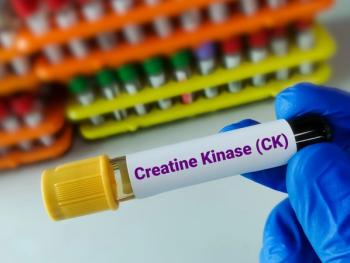
Capricor’s DMD Cell Therapy Faces FDA Setback
The company said it was optimistic that the issues identified by the Food and Drug Administration could be resolved with new data.
The developer of a new cell therapy for Duchenne muscular dystrophy (DMD) says it will continue to push for FDA approval despite receiving a complete response letter from the agency this week declining to approve the company’s biologics license application (BLA).
Capricor Therapeutics said on Friday that the FDA had rejected its lead cell therapy, deramiocel, despite what the company said had been encouraging interactions with the agency. In March, the FDA granted priority review status to deramiocel based on data from the HOPE-2 trial and its open-label extension.
Linda Marbán, Ph.D., the company’s chief executive, said in a conference call that the decision came as a surprise.
“We had followed the guidance provided by the FDA at every stage, from submission through inspection and review,” she said.
Marbán noted that the company had successfully passed its pre-licensure inspection, completed a mid-cycle review with no significant deficiencies identified by the agency, and responded to “more than 50 information requests” from the FDA during the review.
She added that a public advisory committee meeting that had been scheduled for deramiocel was recently canceled by the FDA without explanation. The complete response letter came just one week before a scheduled late-cycle meeting.
“We believe this sequence of events is deeply concerning, and to our knowledge, unprecedented,” she said.
The BLA sought the FDA’s approval to market the therapy as a treatment for DMD-associated cardiomyopathy. Last month, the company
In its letter to the company, the FDA said the BLA did not meet statutory requirements for substantial evidence of effectiveness and said additional clinical data would be needed. Specifically, the agency said there were outstanding items in the Chemistry, Manufacturing, and Controls section of Capricor’s application.
The company said it had already addressed most of those issues in previous communications to the FDA, though it said the agency had not yet reviewed the new information at the time it sent the response letter.
Marbán said the FDA has opened the door to further meetings to work through the issue.
“They were clear in their response letter that they were going to look for a response to this complete response (letter), and that the clock would be restarted once we submitted a response to the CR,” she said.
Marbán does not believe Capricor will need to file a new BLA but instead will revise the existing BLA. In the meantime, the company said it expects to release top-line results from the phase 3 HOPE-3 trial in the third quarter of 2025. The study is a randomized, placebo-controlled trial of 104 patients. Marbán said she is hopeful the data from the new trial will bolster their case.
“We remain really hopeful that this is going to be relatively easily resolved, with a little bit of a setback, but not a major setback,” she said.
More broadly, Marbán said she believes their therapy, which is a novel treatment targeting an indication with a high unmet need, aligns with the priorities publicly stated by Health and Human Services Secretary Robert F. Kennedy Jr. and other officials.
“We do believe… that this is exactly the type of therapeutic they want to see move forward,” she said. “So we are confident in our ability to work with them.”
Newsletter
Get the latest industry news, event updates, and more from Managed healthcare Executive.






















































